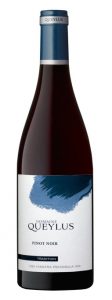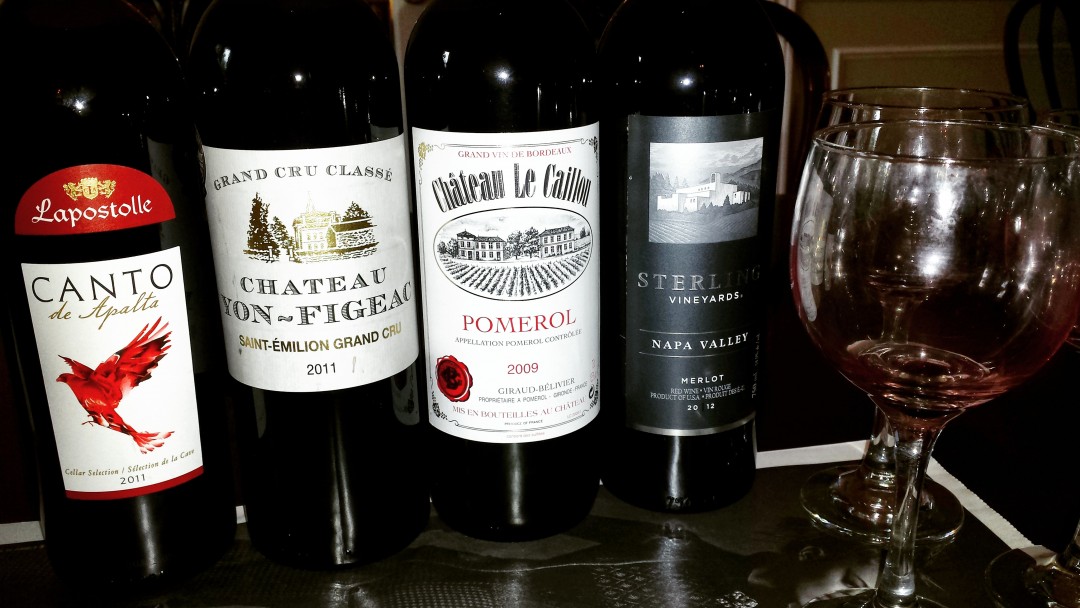Photo credit: Washington State Wine Commission (Horse Heaven Hills AVA)
On the northwestern tip of the USA, bordering the Pacific Ocean, lies Washington State. Given its northerly, maritime location one would assume the climate is cool and damp. Not the kind of place where vineyards would thrive. And yet, Washington is second only to California in vineyard acreage and wine production in the United States.
Despite its northerly location, wine from Washington State is often pretty heady stuff. The Cascade Range of mountains divides the state from north to south, creating a rain shadow for the region that lies to its east: the Columbia Valley. It is in this warm, semi-arid land that a vast and flourishing vineyard lies.
Approximately 55 000 acres (over 22 000 hectares) of vines are planted here, almost entirely within the immense Columbia Valley region. According to the Washington State Wine Commission, the Columbia Valley gets a whopping 16 hours of sunshine per day on average in the summer months. This makes it sunnier even than California’s Napa Valley. This abundance of sunshine means that wine from Washington State tends to be rich, ripe, and robust in style.
However, it is dangerous to over generalize when it comes to wine from Washington State. Due to its massive size and wide diversity of soil types, the Columbia Valley AVA (appellation ) contains 10 sub-appellations within its boundaries. Each possesses distinctly different mesoclimates. AVAs in the northern part of the region, such as Ancient Lakes have a cooler, continental climate, where grapes like Riesling and Chardonnay thrive. Conversely, Wahluke Slope in the south, central area is far warmer, favouring production of bold, fruity red wine from Cabernet Sauvignon, Merlot, and Syrah grapes.
Wine from Washington State that is labelled with a sub-appellation thus offer a slightly better notion to wine drinkers of the style of wine they are likely to discover upon uncorking the bottle. That is, if the wine drinker in question knows a little about these vineyards, or wants to do a quick google search. Washington wines labelled with just the Columbia Valley AVA (the majority) are harder to pin down.
A recent tasting of 34 white and red wine from Washington State consisted of mainly Columbia Valley AVA wines. On the whole, the wines were big and ultra-ripe. Many were pleasant, in a smooth, rounded, fruity style but there was a sense of sameness from glass to glass. This is not an indictment of wines from Washington State. There are scores of exciting wines being made in a lighter, more nuanced style…they just aren’t as widely available on our retail shelves just yet.
My stand-out wines from the event are listed below:
L’Ecole N° 41 Sémillon 2017, Columbia Valley AVA – 90pts. PW
Very inviting nose featuring white floral notes and ripe lemon, with underlying hints of custard cream and exotic fruit. Full-bodied, with a rounded mouthfeel, and sufficient freshness to balance the faintly warming alcohol. Finishes dry, with lingering vanilla, toast nuances.
Where to Buy: SAQ (25.30$)
Barnard Griffen Fumé Blanc 2016, Columbia Valley AVA – 89pts. VW
Classic Sauvignon Blanc nose mingling musky aromas with vibrant guava, gooseberry and passion fruit notes. The palate is slightly lean, but fresh and clean, with hints of anise and bright citrus fruit flavours that give a pleasant bitterness to the finish.
Where to Buy: SAQ (19.45$)
Alexandria Nicole Cellars “Shepherd’s Mark” 2016, Horse Heaven Hills AVA – 91pts. PW
Aromatic Viognier-led blend, with fragrant apricot, yellow pear and honeysuckle notes, underpinned by pleasant herbal nuances. Richly layered and plump on the palate, with macerated stone fruit flavours, lifted by a refreshing lemon-y tang. Finishes dry. A highly versatile white wine for food pairing.Q
Where to Buy: SAQ (26.00$)
Charles & Charles Riesling 2016, Yakima Valley AVA – 88pts. VW
Quite Germanic in style; highly aromatic with a lovely balance of tangy acidity and subtle sweetness. The nose displays petrol, ripe lemon and baked apple notes. The palate is lean, with a sleek, racy structure, and lifted finish. Great everyday apéritif style Riesling.
Where to Buy: SAQ (18.00$)
Hedges Family Estate “Le Merlot” 2016, Columbia Valley AVA – 92pts. PW
Seductive nose redolent with crushed blackberry, black plum, cedar and baking spices. Full bodied, with a velvety texture, polished tannins, and moderate depth of mingled black fruit and dark chocolate flavours. Finishes surprisingly fresh for such a ripe, heady red. Good value.
Where to Buy: SAQ (25.15$)
Barnard Griffen Syrah 2016, Columbia Valley AVA – 90pts. PW
This is a big, brooding Syrah. The ultra-ripe nose offers notes of baked blackberry, black cherry, violets, and dark chocolate. The palate starts fresh, with a firm grip, that gives way to a concentrated, fruity core. Notes of graphite and sweet tobacco linger on the finish. Decant several hours before drinking. Serve slightly chilled to tone down the warming alcohol.
Where to Buy: SAQ (25.35$)
Matthews Winery Claret 2013, Columbia Valley AVA – 91pts. LW
A rich, opulent Bordeaux blend with intense aromas of candied cassis cedar, baking spice and chocolate. Full-bodied and dense on the palate; brimming with macerated black fruit, sweet tobacco and cedar. Weighty, muscular tannins frame the long finish. A powerhouse red requiring an equally bold food pairing.
Where to Buy: SAQ (57.00$)
Hedges Family Estate “In Vogue” 2016, Columbia Valley AVA – 93pts. LW
Ultra-ripe cassis and black plum weave together nicely with notes of cedar, tobacco, leather, and spice on the complex nose. The palate is offers bright acidity, tightly knit structure, and a weighty core of luscious fruit. Finishes dry, with fine, sinewy tannins and lovely freshness. Bold, but well balanced with lots of finesse.
Where to Buy: SAQ (57.00$)










